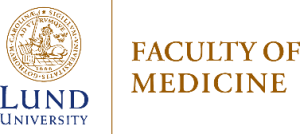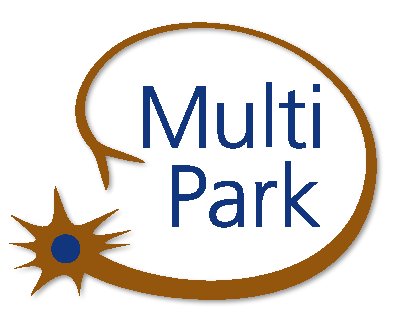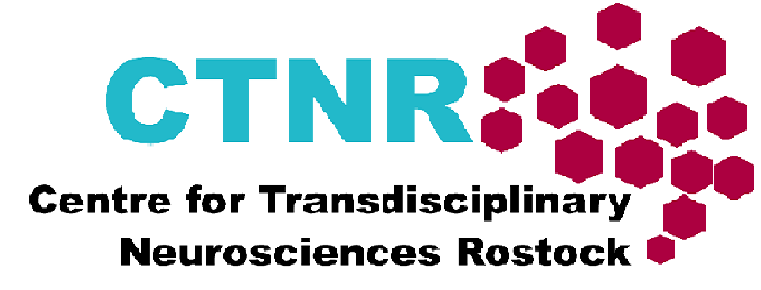Neuroscience Community
The following overview present the scientific key questions and methods of both scientific locations. The information should lay the basis for joint projects and initiatives within the United Neuroscience Campus Lund – Rostock (UNC).
Get in contact with neuroscience researchers from Lund and Rostock!
Lund (Sweden)
Alina Blusch

PhD, MultiPark
Biomarkers in Brain Disease, Experimental Medical Science, Faculty of Medicine at Lund University
Research areas: Neurodegeneration, Huntington`s disease, Metabolism, Inflammation
Angela Cenci-Nilsson

Professor, Coordinator, Principal Investigator MultiPark, UNC Board member
Experimental Medical Science, Faculty of Medicine at Lund University
Research areas: symptomatic and disease-modifying treatments for disorders of basal ganglia origin, particularly Parkinson´s Disease (PD)
Gunnar Keppler Gouras

Professor, Principal Investigator MultiPark
Experimental Medical Science, Experimental Dementia Research Unit, Faculty of Medicine at Lund University
Research areas: Alzheimer's disease, dementia, neurodegeneration
Andreas Heuer

Associate Professor, Coordinator, Principal Investigator MultiPark, Group Leader
Behavioural Neuroscience Laboratory, Department of Experimental Medical Science, Faculty of Medicine at Lund University, Sweden
Research areas: Parkinson's disease, behavioural neuroscience, non-motor symptoms, preclinical rodent models
Oxana Klementieva

Associate Professor, Principal Investigator MultiPark
Medical Microspectrocpy, Faculty of Medicine at Lund University
Research areas: Using infrared microspectroscopy, Medical Microspectrocopy group is developing ultra-sensitive protocols to study amyloid protein aggregation in brain tissue and cells. We pioneered novel and ground-breaking evidence of intraneuronal β-sheet enriched aggregates which can appear in neurons.
Åsa Mackenzie

Senior Lecturer, Principal Investigator MultiPark
Molecular Neuroanatomy (Mackenzie Lab), Experimental Medical Research, Faculty of Medicine at Lund University
Research areas: Parkinsons disease, non-motor and motor, Depression, Subthalamic nucleus, Basal ganglia, Limbic and affective function, Motivation, reward and aversion, Psychiatric and cognitive symptoms.
Niklas Marklund

Professor, Principal Investigator MultiPark
Neurosurgery/LUBIN LAB, Department of Clinical Science, Faculty of Medicine at Lund University
Research areas: Traumatic brain injury and other forms of acute brain injury such as intracerebral hemorrhage and subarachnoid hemorrhage. Long-term consequences of sports concussion. In particular, I focus on the role of axonal injury and neuroinflammation and how this links to neurodegeneration and dementias, including CTE, following traumatic insults to the nervous system.
Maria H Nilsson

Associate Professor (Physiotherapy), Senior Lecturer, Principal Investigator MultiPark
Department of Health Sciences, Faculty of Medicine at Lund University
Memory Clinic, Department of Neurology, Rehabilitation Medicine, Memory Disorders and Geriatrics, Skane University Hospital, Malmö
Research areas: activity and participation in people ageing with neurodegenerative disorders, i.e. major (dementia) and minor neurocognitive disorders as well as Parkinson’s disease. More specifically, the research targets gait, balance (including falls and fear of falling), mobility, physical activities and cognitive motor interference (dual tasking)
Per Odin

Professor, Consultant, Head of Division, Principal Investigator MultiPark, UNC Deputy Speaker
Restorative Parkinson Unit, Dept of Clinical Sciences, Division of Neurology, Faculty of Medicine at Lund University
Research areas: Parkinson´s disease (PD), Monitoring of PD, Continuous dopaminergic stimulation, Pump-based therapies, Non-motor symptoms, Late stage PD, Work and PD
Åsa Petersén

Professor of Neuroscience, Senior Consultant in Psychiatry, Principal Investigator MultiPark
Experimental Medical Sciences, Translational Neuroendocrine Research Unit, Lund University
Research areas: Huntington disease, ALS, FTD
Per Petersson

Ass. Professor, Principal Investigator MultiPark
Experimental Medical Sciences, Integrative Neurophysiology,Faculty of Medicine at Lund University
Research areas: Basal ganglia physiology
Karolina Pircs

Associate Senior Lecturer, MultiPark
Molecular Neurogenetics, Experimental Medical Science, Faculty of Medicine at Lund University
Research areas: autophagy, neuroscience, ageing, Huntington's disease, induced neurons, viral vectors
Marie Sjögren

PhD, MultiPark
Biomarkers in Brain Disease, Experimental Medical Science, Faculty of Medicine at Lund University
Research areas: Our main focus is understanding peripheral pathology in HD and investigate its importance for disease pathogenesis and biomarkers. Our work is based on the hypothesis that insights into peripheral pathology in HD will improve knowledge of key pathogenic mechanisms, possibly providing new biomarkers and novel therapeutic targets.
Håkan Widner

Senior Consultant, Adjunct Professor, Group Leader of Regeneration in Movement Disorders, Principal Investigator MultiPark
Department of Neurology, Faculty of Medicine, Lund University
Research areas: Clinical Trials, Transplantation in Parkinson's disease, Growth Factor (CDNF, PDGFbb) clinical trials, Diseaes modification, DBS Clinic, Huntington's Disease
Rostock (Germany)
Thomas Freiman

Professor, Director, CTNR
Department of Neurosurgery, University Medicine Rostock
Research areas: Oncology, Epilepsy, Neuroregenration
Georg Fuellen

Professor, Director, CTNR
Institute for Biostatistics and Informatics in Medicine and Ageing Research, University Medicine Rostock
Research areas: Omics, Bioinformatics for Neuroregeneration, Neurodegeneration research
Florian Gessler

Deputy Director, Senior Physician, CTNR
Department for Neurosurgery, University Medicine Rostock
Research areas: Neurooncology, Neurocritical care
Frederike Hanke

Professor, CTNR
Neuroethology, Insitute for Biosciences, University of Rostock
Research areas: Sensory systems, vision, cognition, visual neuroanatomy, orientation, navigation marine mammals, cephalopods, fishes
Andreas Hermann

Professor, Section Head, CTNR
Translational Neurodegeneration Section "Albrecht Kossel", University Medicine Rostock
Research areas: Translational neurodegeneration, basic mechanisms of neurodegeneration and pathological aging
Rüdiger Köhling

Professor, Director, Co-Speaker CTNR
Oscar-Langendorff-Institute of Physiology, University Medicine Rostock
Research areas: Animal Models of neurological Diseases, Epileptology and Dystonia Research, Experimental Neurophysiology, Cellular and network functional plasticity
Peter Kropp

Professor, Director, CTNR
Institute of Medical Psychology and Medical Sociology, University Medicine Rostock
Research areas: Attention, headache, migraine, behaviour therapy
Angela Kuhla

Apl. Professor, UNC Board, CTNR, Group Leader
Metabolic Syndrome and Neurodegeneration Group, Rudolf-Zenker-Institute for Experimental Surgery, University Medicine Rostock
Research areas: Obesity-associated neurodegeneration and the role of FGF21 in it, preclinical research of AD pathology and use of various intervention strategies therein
Kevin Peikert

Clinician Scientist, UNC Board member, CTNR
Neurology, University Medicine Rostock
Research areas: Hyperkinetic movement disorders, neuroacanthocytosis syndromes, VPS13-related disorders, VPS13/XK proteins, "bulk lipid transfer" in health and disease
Alexander Storch

Professor, Director, UNC and CTNR Speaker
Department of Neurology, University Medicine Rostock
Research areas: basic mechanisms of novel therapeutic approaches in Parkinson’s disease
Marc-André Weber

Professor, Director, CTNR
Institute of Diagnostic and Interventional Radiology, Pediatric Radiology and Neuroradiology, University Medicine Rostock
Research areas: Magnetic resonance imaging, Non-proton MRI, Magnetic resonance spectroscopy, Spine imaging, Interventions

Sae-Yeon Won
Assistant Professor, CTNR
Department for Neurosurgery
University Medicine Rostock
Research areas: Vascular Neurosurgery, Traumatic Brain Injury, Epileptic Neurosurgery, Endoscopic and Robotic Neurosurgery
Rostock
Translational neurodegeneration: a bidirectional approach for novel curative treatments
The overall aim of the Translational Neurodegeneration Section “Albrecht Kossel” is to develop novel strategies to cure neurodegenerative diseases. This is achieved by a novel concept of combining research on pathological and healthy aging and research on neurodegenerative pathophysiology. The strategy is to (i) comparatively analyse mechanisms of physiological and pathological aging, (ii) to understand their role on the development of resilience factors against
neurodegeneration, (iii) unravel the pathophysiological cascade of neurodegenerative diseases and (iv) to translate these approaches in innovative therapeutic interventions in clinical application. Two main approaches are thus brought together, namely the reduction of pathological aging on the one hand together with specific therapies of neurodegenerative mechanisms on the other hand. The combination of these two principles is a novel and very promising concept for the therapy of neurodegenerative diseases.
The Translational Neurodegeneration Section “Albrecht Kossel“ is developing novel causative therapeutic approaches of neurodegenerative diseases using a bidirectional clinical translation approach with main focus on Amyotrophic Lateral Sclerosis and Frontotemporal Dementia and to effectively translate these in clinical practice. Another focus is patient-centred care in very progress disease stages (locked-in syndrome) using novel man machine interactions such as eye tracking computer devices. Major need is to combine this view with the understanding how the organisms or the brain can escape such insults (resilience). The section for ”Translational Neurodegeneration“ will uniquely combine these two strategies to ultimately find causative therapies for neurodegenerative diseases.
The main models used:
We mainly use human cell models of pathological aging (progeria infantilis and adultorum, down syndrome) and neurodegeneration (main focus on ALS/FTD, but including also old age neurodegeneration [ALS/FTD] and young age neurodegeneration [Chorea-Acanthocytosis, Nieman pick type C, NCL]). These include mainly human induced pluripotent stem cells and their derivatives as well as directly programmed human cells.
Contact:
Andreas Hermann, MD, PhD
German Center for Neurodegenerative Diseases (DZNE) and Translational Neurodegeneration
Section "Albrecht Kossel", University Medicine Rostock
Key questions on methods for the validation of diagnostic biomarkers
Research on diagnostic biomarkers is being particularly fruitful for Alzheimer’s disease (AD), as well as for other dementing neurodegenerative disorders. As hoped when such biomarkers were first identified, their development provides invaluable support to early and accurate diagnosis as well as to treatment development, allowing to select or exclude the target etiologies for experimental or control groups, and to quantify target physiological responses to treatment. Methods for the validation of such biomarkers have recently been systematized with an international initiative adapting a formal validation framework from oncology to the field of AD (the Strategic Biomarker Roadmap). This framework includes 5 development phases covering analytical validity, clinical validity and clinical utility through well-defined sequential steps. Two decades ago, such framework was taken from the 4-phases of drug development and adapted to optimize the validation of oncological biomarkers. The consequent oncology developments on prevention, treatment and precision-medicine are well-known. This validation framework is being increasingly used in the field of neurodegenerative diseases, but it still contains gaps or steps that are only partially developed in neuroscience research, which reduces the efficiency of translating scientific findings into clinical practice.
Key questions on improving such methods target heterogeneous gaps:
Our studies still do not target the outcomes required by regulators. How can we define and incorporate them in this framework? How can we structure a dialogue with stakeholders (including patients and regulators) to fill this gap? How much do regulators agree with this framework at all? Do we have a shared language allowing different stakeholders and researchers to understand each-other? Do we dispose of appropriate methods to structure this communication?
Pioneer projects are defining new methods to overcome such gaps (IMPACT developed embedded pragmatic clinical trials; STRiDE structured communication among institutions and procedures for the smooth flow of translation; MOPEAD started to involve citizen potentially affected by neurodegenerative disorders in research directly). Implementation science also disposes of a variety of methods. We are adaptating and translating them in order to incorporate them consistently in the Strategic Biomarker Roadmap and allow concrete use in everyday research.
Contact:
Marina Boccardi, PhD
Late-Translational Dementia Research, German Center for Neurodegenerative Diseases (DZNE)
Cortico-striatal synaptic transmission changes as mechanisms of pallidal deep brain stimulation
Dystonias are thought to arise from a disturbance in striatal control of the globus pallidus internus (GPi). Pallidal deep brain stimulation (DBS), in turn, is an important option for patients with severe dystonias. The mechanisms of GPi-DBS, however, are far from being understood. Although a disturbance of striatal function is thought to play a key role in dystonia, the effects of DBS on cortico-striatal function are unknown. We hypothesised that DBS, via axonal backfiring, or indirectly via thalamic and cortical coupling, alters striatal synaptic function and excitatoryinhibitory balance within this nucleus. We tested this hypothesis in the dtsz hamster, an animal model of inherited generalised, paroxysmal dystonia. Hamsters (dystonic and non-dystonic controls) were bilaterally implanted with stimulation electrodes in the GPi. DBS (130 Hz), and sham DBS, were performed in unanaesthetised animals for 3 h. Synaptic cortico-striatal field potentials, as well as miniature excitatory postsynaptic currents (mEPSC) and firing properties of medium spiny striatal neurones were recorded in brain slice preparations obtained immediately after EPN-DBS. The main findings were as follows: a. DBS increased corticostriatal evoked responses in healthy, but not in dystonic tissue. b. Commensurate with this, DBS increased inhibitory control of these evoked responses in dystonic, and decreased inhibitory control in healthy tissue. c. Further, DBS reduced mEPSC frequency strongly in dystonic, and less prominently in healthy tissue, showing that also a modulation of presynaptic mechanisms is likely involved. d. Cellular properties of medium-spiny neurones remained unchanged. We conclude that DBS leads to dampening of cortico-striatal communication, and restores intrastriatal inhibitory tone.
Contact:
Rüdiger Köhling, MD
Oscar-Langendorff-Institute of Physiology, University Medicine Rostock
Bioresorbable stent for intracranial endovascular therapy
Intracranial stents are used for the treatment of intracranial arterial stenosis and remodeling of the parent vessel as part of endovascular aneurysmal therapy. One major drawback of intracranial stent implantation is the need for permanent or long-term platelet inhibition with subsequently increased risk of hemorrhagic complications. Also, there is no long-term experience for implanted intracranial stents, which is of importance, since many patients treated for intracranial aneurysms are young, as opposed to those with intracranial stenosis. Bioresorbable stents offer a new therapeutic approach in the treatment of intracranial aneurysms and intracranial stenosis and may reduce the need for antiplatelet therapy, prevent neo-intimal hyperplasia and subsequent stenosis with ischemic events, facilitate endovascular access distal to the treated location, and improve follow-up imaging through reduced artefacts in CT and MRI.
Our aim is to develop a suitable bioresorbable intracranial stent that is fully resorbed after implantation and therefore requires dual antiplatelet therapy for a limited period of time only. We established an in vitro vascular flow model based on high-resolution CT angiography datasets and 3D-printing of individualized models of intracranial aneurysms and their parent vessels, which allows us to perform diagnostic angiography and simulate endovascular aneurysm treatment under nearly realistic conditions, as well as CT and MR imaging before and after therapy.
In cooperation with the Institute of Biomedical Engineering, prototypes of lasercut bioresorbable stents (polylactide, PLLA) and delivery systems are developed to fit the needs for an intracranial remodeling device. These stents will be valuated regarding physical and hemodynamic characteristics in our flow model, using fluoroscopy and/or high-definition video imaging for implantation and CT / MRI for post-implantation imaging. After optimization, the developed stent will be transferred to the in vivo model of the New Zealand Rabbit.
Contact:
Daniel Cantré, MD
Institute of Diagnostic and Interventional Radiology, University Medicine Rostock
Clinical dementia research in Rostock – from methods development to application in health care
Our aim is to bring diagnostic and treatment innovations for dementia from clinical research to health care. Diagnostic innovations include molecular PET and multimodal MRI imaging methods for identification of at risk groups for cognitive decline and stratification of metabolic and functional subtypes within the Alzheimer’s disease spectrum. Validation of such imaging approaches goes along two directions: (i) a neuropathological reference of regional and global pattern of brain pathology and (ii) determination of usefulness of novel imaging markers in respect to predicting clinical course and treatment response. Complementary diagnostic approaches include wearable sensor systems to detect every day activity pattern as well as task oriented navigation behavior in real world and virtual settings. Treatment innovations include testing novel treatment targets in human and preclinical studies as well as non-pharmacological interventions including care-giver and patient centered assistive system devices. A key element of this research is the early involvement of patients and caregivers into the research process using methods from participatory research. The final goal is to test novel treatments and diagnostic tools in health care settings, leveraging the primary care research platform of the DZNE Rostock/Greifswald as well as developing a national coverage with evidence development study together with the national funding body (Gemeinsamer Bundesausschuss).
Our work is conducted in close collaboration with the implementation science, health care systems research, health economy and cognition in PD research groups of the DZNE Rostock/Greifswald and the local universities as well as with national and international collaboration partners.
Contact:
Stefan Teipel, MD
German Center for Neurodegenerative Diseases (DZNE),
Department of Psychosomatic and Psychotherapeutic Medicine, University Medicine Rostock
Obesity-associated neurodegeneration: presentation of different models as well as research methods and mechanistic pathway behind them
Obesity -often associated with metabolic syndrome- also shows a strong correlation with neurodegenerative processes. For example, a retrospective twin study demonstrated that obese individuals with a body mass index (BMI) of >30 had a 70% increased risk of developing dementia. High BMI is thought to correlate with a reduction in brain volume and is implicated in the development of metabolic syndrome-associated neurodegeneration. Thus, tensor-based morphometry analyses showed that obese patients with a BMI >30 had atrophies in the frontal lobus, anterior cingulate gyrus, hippocampus, and thalamus. A study of our cooperation partners in Greifswald on the correlation between abdominal obesity and gray matter could prove by voxel-based morphometry that increasing waist circumference was negatively associated with gray matter volume. Among others, brain regions involved in cognition but also in the processing of hunger/satiety signals were affected. Preclinical studies also verify that obesity impairs cognitive performance. For example, rats fed a high fat diet (HFD) exhibited disturbances in hippocampal long-term potentiation in the CA1 region. Low-grade inflammation starting from adipose tissue is thought to initiate neuroinflammatory and thus neurodegenerative processes. Thus, HFD feeding has been shown to lead to activation of JNK and NF-κB signaling pathways with subsequent release of pro-inflammatory cytokines (TNFα, IL-6) in the mediobasal hypothalamus, but also in the hippocampus. In our group, we are investigating, among others, in longitudinal studies under a DFG grant, to what extent a diet-induced and genetic-induced obesity affects cognition and combine these analyses with imaging techniques. This give us the opportunity with radiopharmaceuticals, such as [18F]TSPO (marker for activated microglia) and [18F]FDG (marker for glucoseuptake), to directly correlate disorders of cognition with neuroinflammatory processes. Furthermore, in this context, we investigate the fasting hormone fibroblast growth factor 21 (FGF21), which is also known to regulate carbohydrate and lipidhomeostasis. Exogenous FGF21 reduces plasma concentrations of triglycerides and cholesterol in obese patients. However, obese patients are also known to have significant increases in hepatic and systemic FGF21 concentrations. This paradoxon is interpreted as FGF21 resistance similar to insulin or leptin resistance, because obese patients show a reduction of the FGF21 co-receptor, ß-Klotho, in adipose tissue due to low-grade inflammation. Whether such FGF21 resistance -mediated by reduced ß-Klotho expression- is also present in brain tissue and thus disturbs nutrient uptake regulation is also one subject of our translational research.
Contact:
Angela Kuhla, PhD
Rudolf-Zenker-Institute for Experimental Surgery, University Medicine Rostock
Lund
Neuroprotection & neuroregeneration - from experimental models to clinical trials
In a time when the population is aging, the number of individuals suffering from neurodegenerative disorders has increased dramatically, yet most clinically available therapies are only symptomatic. Treatments to halt the ongoing neurodegeneration or to restore lost function by structural regeneration are one of the major medical needs of our time. Parkinson's disease (PD), the second most common neurodegenerative disorder. Although is associated with distinct histological changes such as the formation of Lewy bodies containing aggregated alpha-synuclein (α-syn), non-cell autonomous pathological alterations such as microvascular changes including blood-brain barrier dysfunction are increasingly gaining interest as they impact on the local microenvironment and may aggravate neuronal dysfunction.
One factor likely aggravating PD is dysregulated glucose. Diabetes is now recognized as a risk factor contributing to the incidence and also the progression of PD. Although a number of different mechanisms underlying the aggravation of PD caused by diabetes have been put forward, less attention has been paid to the fact that diabetes and PD share pathological microvascular alterations in the brain.
To elucidate underlying mechanisms of disease progression, we perform preclinical research in cell-and animal models using a large number of behavioural, histological and molecular techniques.
We have recently demonstrated that microvascular alterations in a PD model even precede neuronal loss and behavioural changes. Furthermore, the addition of diabetic conditions to a PD model causes specific vascular and inflammatory changes that may accelerate the timeline of pathological microvascular alterations in PD and thereby contribute to the mechanisms underlying the aggravated progression of PD when associated with diabetes.
Bridging the lab and the clinic, we also conduct intervention studies using growth factors in PD. We have recently concluded a multicenter study (Transeuro) using neurotransplantation of dopaminergic progenitors from fetal tissue in PD. We are currently preparing a first-in-human trial using GMP-produced dopaminergic progenitor cells (STEM-PD) derived from human embryonic stem cells (an advanced therapeutic medicinal product, ATMP).
Contact:
Gesine Paul-Visse, MD, PhD
Neurology, Faculty of Medicine, Department of Clinical Sciences, Lund University
PET imaging for Parkinson- and Alzheimer-related disorders in Lund
There are several ongoing cohort studies of PD and AD at Lund University/Skåne University Hospital with the aim of finding biomarkers 1) for earlier and more reliable diagnosis of neurodegenerative disorders, 2) to track disease progression, and 3) for prognosticating future cognitive decline.
The initial study “The PD study” started in 2008 and today 362 participants have been followed with blood- and cerebrospinal fluid (CSF) sampling, cognitive tests and repeated MRI for up to 10 years. Participants with PD/PDD (n= 205), multiple system atrophy (MSA, n= 34), progressive supranuclear palsy (PSP; n= 35), dementia with lewy bodies (DLB, n=14) and corticobasal syndrome (CBS, n= 7) were included. Within the “BioFINDER-studies” we are following two
separate cohorts with 1) controls and participants with cognitive complaints (BioFINDER-1, inclusion started 2010) and 2) controls and participants with neurodegenerative disorders (BioFINDER-2, inclusion started May 2017).
The BioFINDER-1 study encompasses cognitively unimpaired (CU, n=834); patients with mild cognitive impairment (MCI; n=292); and, participants with AD dementia (n=93). Participants have been followed for up to ten years. ~400 have undergone [18F]flutemetamol (ß-amyloid) PET scans and ~270 have undergone [18F]Flortaucipir (AV-1451; tau) PET. Approximately 60 participants have follow-up tau PET for up to 6 years.
The BioFINDER-2 study is still including participants and have thus far included 1283 participants: Cognitively unimpaired (n=600); MCI (n=270); AD (n=187); Frontotemporal dementia (n=22); CBS (n=7); PD (de novo n=53); PDD (n=5); DLB (n=40); PSP (n=26); MSA (n=15); PNFA (n=3); semantic dementia (n=9); vascular dementia (n=20); and, dementia not specified (n=26).
Within the BioFINDER 2 study all participants undergo repeated cognitive testing, blood and Cerebrospinal fluid (CSF) sampling, MRI and [18F]RO948 (tau) PET imaging every two years. Cognitively unimpaired and MCI participants also have [18F]flutemetamol PET scans; Participants with PD, MSA, CBS and PSP undergo [18F]DOPA imaging. A small subsample of participants with synucleinopathies have undergone [18F]ACI-3847 or will undergo [18F]ACI-12589 (α-synuclein) PET imaging.
Contact:
Ruben Smith, MD, PhD
Neurology, Faculty of Medicine, Department of Clinical Sciences, Lund University
The periphery (gut)-brain axis of Parkinson’s disease: How bacterial amyloids phenol soluble modulins from Staphylococcus aureus induces alpha-synuclein aggregation
Synucleinopathies are continuing to rise globally, among which Parkinson’s disease (PD) affects more than 1-2% of the population at 60 years of age. Aggregated α-synuclein (α-syn) is the main constituent of Lewy bodies, which are a pathological hallmark of PD. Environmental factors are thought to be potential triggers capable of initiating the aggregation of the otherwise monomeric α-syn. Braak’s seminal work redirected attention to the intestine and recent reports of dysbiosis have highlighted the potential causative role of the microbiome in the initiation of pathology of PD. Dysbiosis has been shown in PD and bacteria have been hypothesized to play a causative role in the PD pathology. Staphylococcus aureus is a common commensal of the gastrointestinal (GI) tract, the nose epithelium, and the skin. Phenol soluble modulins (PSMαs) induce inflammation and contribute to the virulence of S. aureus and recent studies have shown that they directly activate neurons. S. aureus is a bacterium carried by 30-70% of the general population. Here, we studied the kinetics of α-syn aggregation under quiescent conditions in the presence or absence of four different PSMα peptides and observed a remarkable shortening of the lag phase in their presence. Whereas pure α-syn monomer did not aggregate up to 450 h after initiation of the experiment in neither neutral nor mildly acidic buffer, the addition of different PSMα peptides resulted in an almost immediate increase in the Thioflavin T (ThT) fluorescence.
Despite similar peptide sequences, the different PSMα peptides displayed distinct effects on the kinetics of α-syn aggregation. Kinetic analyses of the data suggest that all four peptides catalyze α-syn aggregation through heterogeneous primary nucleation. The immunogold electron microscopic analyses showed that the aggregates were fibrillar and composed of α-syn. Addition of the co-aggregated materials to a cell model expressing the A53T α-syn variant fused to GFP was found to catalyze α-syn aggregation and phosphorylation in the cells. Our results provide evidence of a potential trigger of synucleinopathies and could have implications for the prevention of the diseases. We are convinced that our findings are of importance to understand how the pathology of PD and related disorders may be initiated and also of major general interest to a wide audience of scientists, both neuroscientists and chemists, in the fields of neurodegenerative diseases and amyloid research.
Contact:
Jia-Yi Li, MD, PhD
Neural Plasticity and Repair, Department of Experimental Medical Science, Faculty of Medicine, Lund University
Clinical Studies on Symptom Fluctuations and Registry Studies on Workforce Participation in PD
Introduction: In the wait for disease-modifying treatment for Parkinson’s disease (PD), efforts towards improved symptom control and reduced negative personal effects of PD can still result in meaningful change. As a PhD student in the Odin group at Lund University, my focus has been clinical studies on the treatment and evaluation of motor complications, as well as registry studies on workforce participation in PD. The general efficacy of levodopa-carbidopa intestinal gel (LCIG) in advanced PD has been established, but, at the time of our study, the effects of LCIG on dyskinesia needed more investigation. The PD Home Diary has been used in clinical trials to evaluate treatment effects for almost 20 years, but has not been validated against the current “gold standard”. As treatments improve, it is also vital to understand how PD affects workforce participation to further reduce the personal and societal effects of PD.
Aims: The overarching aim of my thesis work has been to increase the knowledge on how health services can support persons with PD. My work has had two main themes. Firstly, the aim has been to contribute to a better understanding and utilization of already existing tools in the treatment and evaluation of motor fluctuations in PD: LCIG and the PD Home Diary. Secondly, the aim was to improve our understanding of the impact of PD on workforce participation.
Used Methods & Technologies: Separate clinical observational studies were designed to investigate the effects of LCIG on dyskinesia and to validate the PD Home Diary. The first study showed that LCIG reduces dyskinesia among persons with advanced PD and troublesome dyskinesia at baseline. The latter study showed that motor state assessments from the patientreported PD Home Diary and those by an experienced observer were found to be in fair agreement. The latter study was conducted in collaboration with colleagues at University of Rostock and was part of the VALIDATE-PD study program on symptom fluctuations in PD. Two registry studies, one cross-sectional and one longitudinal, were designed to investigate workforce participation among persons with PD. Workforce unavailability was found to be associated with anxiety among working-age persons with PD. Persons with a first sick-leave due to PD exhibited increased sickness absence in the preceding five-year period compared to controls, particularly due to musculoskeletal diagnoses. A study using Swedish national registry data on workforce participation in PD is currently ongoing.
Discussions: Our work has shown that LCIG is a feasible treatment also for persons with advanced PD and troublesome dyskinesia. We have also shown that the PD Home Diary should not be regarded as interchangeable with the observer assessment “gold standard”. The VALIDATE-PD study program continues and there are plans to further investigate the motor assessments made by mobile health technologies. Furthermore, our registry work found an association between workforce unavailability and anxiety that needs further investigation, but anxiety should nonetheless be treated when identified. We also found musculoskeletal sickness absence to be significantly increased in prodromal and early PD, which emphasizes that functioning and workforce participation might already be affected at the time of diagnosis and demand immediate attention. We hope to build on this knowledge with our ongoing study using Swedish national data on workforce participation.
Contact:
Jonathan Timpka, MD
Neurology, Faculty of Medicine, Department of Clinical Sciences, Lund University
Intracellular prion-like Aβ in Alzheimer’s disease
lzheimer’s disease (AD) affects over 30 million people and with an aging population that number will only grow. The peptide amyloid-beta (Aβ) is heavily implicated in the pathogenesis of AD. The neuropathological hallmark of AD is the extracellular plaques made of aggregated Aβ, all dominant inherited forms of AD either increase the production of Aβ or its propensity to aggregate and the first detectable biomarker change in AD is a decline of CSF Aβ42. Yet,
plaques do not correlate to disease severity and attempts to treat AD by removing plaques have not staved off dementia. There is something we do not understand about Aβ’s role in the pathogenesis of AD.
We hypothesize that Aβ has prion-like properties. That is that pathologically misfolded Aβ can serve as a template for further misfolding of Aβ and thus spread its misfolded state throughout the brain. We also hypothesize that intraneuronal Aβ is important in the development of AD. We have developed a cell-line that constitutively produces intracellular misfolded Aβ that can be transmitted both vertically and horizontally. Thus demonstrating that intracellular prion-like Aβ is
possible. We have via intracerebral injection of mouse AD brain homogenate into transgenic AD mice shown that this will not only, as previously shown, accelerate plaque formation but also have effects on intraneuronal Aβ of both adjacent and synaptically connected brain regions.
Finally, we have shown that intracellular misfolded Aβ will change the metabolism of the Amyloid precursor protein to produce more Aβ. This could partly explain the massive increase of cerebral Aβ that we see in the AD brain. By appreciating the role of intraneuronal Aβ we might better understand the role of Aβ in AD and thus know what to target.
Contact:
Tomas Roos, MD, PhD
Experimental Dementia Research, Lund University
Clinical Neurogenetics research in Lund: Cohorts, methods, visions
The Clinical Neurogenetics research group in Lund takes advantage of the rapid developments in New Generation Sequencing (NGS) applications to diagnose and understand neurological movement disorders. Cohorts of patients with Parkinson disease, dystonia, or ataxia have been recruited, partly at our centre and partly in a population-based approach. Individuals and families with other rare or complex presentations of neurological diseases are also included. The clinical phenotype of these patients is carefully determined (“deep phenotyping”) by group members and in collaboration with clinicians and researchers in neurology and other specialties as applicable. Genetic analyses with whole exome or whole genome sequencing are performed on patients and family members and analysed by a bioinformatician in the group. The aim is to compile the spectrum and prevalence of known genetic movement disorders in our population, to identify novel genotype-phenotype associations, and to identify novel genetic causes for these neurological disorders. We also assess how often a more intensive clinical and genetic analysis within our research leads to a definitive (genetic) diagnosis, compared to routine workup within the health care system.
Secondary projects include the contribution to international multi-centre studies on rare diseases, studying the psychological effects on our patients of genetic testing procedures and of being informed about positive or negative test results, and to update clinical NGS testing algorithms. A largely population-based Parkinson disease cohort has been followed.
Contact:
Andreas Puschmann, MD, PhD
Neurology, Faculty of Medicine, Department of Clinical Sciences, Lund University
Translational research on L-DOPA-induced dyskinesia
L-DOPA-induced dyskinesia (LID) is a major complication of dopamine (DA) replacement therapy in Parkinson´s disease (PD). It entails an increased risk of disability and social stigma, and it is associated with debilitating fluctuations in mood, cognitive, and autonomic functions. Beside its medical significance, LID is raising considerable interest as a topic for neuroscience research, as it provides a paradigm to investigate how altered neuronal dynamics in corticobasal ganglia networks can disrupt the control of movements. Our group was the first to model LID in rodent species. With our animal models, we have been able to reveal key molecular and cellular mechanisms underlying the development of this therapy complication. We have been studying these mechanisms at multiple levels, such as, dopamine and glutamate receptor signaling, maladaptive structural-functional plasticity of both neurons and gliovascular cells, and altered activity patterns in the basal anglia. We focus on recent studies addressing the role of different dopamine receptors and striatal output pathways in the occurrence of different forms of dyskinesia. In addition to shedding light on fundamental pathophysiological mechanisms, our results have important implications to the design and interpretation of antidyskinetic drug trials. Our plan is to deepen the collaboration with clinical research groups in order to try and verify the most important hypotheses and implications that are emerging from these animal studies.
Contact:
Angela Cenci-Nilsson, MD, PhD
Basal Ganglia Pathophysiology, Lund University Research Groups, Department of Experimental Medical Science, Faculty of Medicine, Lund University
Developing human stem cell-derived neurons for treatment of neurodegenerative diseases
Neurodegenerative diseases such as Alzheimer’s Disease, Parkinson’s Disease and Lewy body disease are severely invalidating diseases with no available options for disease modifying or restorative treatment. As the brain cannot repair itself after neuronal loss, transplantation of new neurons generated from human pluripotent stem cells constitute a promising approach for repairing the brain and rebuilding damaged circuits, thereby restoring motoric and cognitive
functions. Associate Professor Agnete Kirkeby and her group are experts in controlling differentiation of pluripotent stem cells into subtype-specific neurons of different regional fates. A major output of the work is the generation of the first European-led pluripotent cell product for treatment of Parkinson’s Disease (STEM-PD) together with Prof. Malin Parmar from Lund University. Through close collaboration with Novo Nordisk, GMP manufacturing facilities, CROs
and clinicians, Prof. Kirkeby has coordinated efforts to bring this ATMP cell product all the way from patenting through GMP manufacturing and towards clinical trial, with expected first-inhuman administration in early 2022. In addition to efforts in generating dopaminergic neurons for Parkinson’s Disease, the Kirkeby lab is currently investigating the potential of applying other types of hPSC-derived neurons for cell replacement therapy, such as hypothalamic neurons for treatment of narcolepsy and basal forebrain cholinergic neurons for treatment of dementia.
Contact:
Yu Zhang, PhD
Human Neural Developmental Biology, Faculty of Medicine, Department of Experimental Medical Science, Lund University





